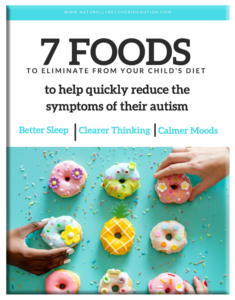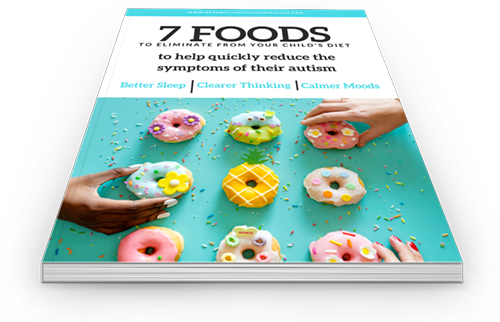The importance of knowing the glycemic index of your food choices is a preventative measure in your child’s health and behavior. This will also help to prevent obesity and diabetes along with keeping his gut flora in better balance.
The glycemic index or GI is a way to measure the physiological effect that various foods have on blood glucose levels. Knowing this can help you to control those hunger and energy fluctuations during the day by eating better choices. This becomes very easy in a short period of time. Once you begin to learn what foods are high and which are low it starts to fall into common sense.
Based on scientific data foods have been tested to show their effect on blood glucose levels. Foods with a low GI will have less of an effect on blood sugar than foods with a high GI. The foods we eat have a direct impact on how quickly our bodies are able to digest them. Slower digestion gives your body a chance to regulate the release of insulin better.
Many inexpensive, pocket-sized books are sold on the glycemic index. It is worthwhile to pick one up and learn how the different foods you are feeding your child will affect his blood sugar. If we look around at the childhood epidemic of obesity and diabetes it is easy to see how it can be prevented by better choices of food. Some foods and their glycemic content are listed below. There are also many websites available.
• Foods with a high GI break down rapidly, therefore releasing glucose into the bloodstream very quickly. This causes a rapid release of insulin which starts to weaken the body’s ability to balance blood sugar levels. This also weakens the adrenal glands (our stress-handling organs), which then weakens the thyroid gland which helps to regulate our hormone levels. All of this contributes to diabetes and obesity.
Foods with a low GI will break down more slowly releasing glucose into the bloodstream more gradually.
Lower glycemic index foods will:
• Keep you feeling full longer
• Assist in weight loss, (by reducing insulin levels it helps you burn fat).
• Assist in the prevention of diabetes, heart disease and some types of cancer.
• Help prevent hypoglycemia, which is associated with headache, fatigue, sleep problems, and lack of mental clarity.
• Improve blood lipid profiles.
• Assist in better cholesterol levels
• Help with metabolic syndrome (insulin resistance also known as Syndrome X).
Protein is a great choice because it is low on the glycemic index. When we eat protein it takes a longer time for our body to break it down. The higher nutrient content combined with a low GI will also assist in satiation. Our body will be fed a source of food it can utilize and one that takes much longer to digest. This keeps us feeling full longer and does not have a negative impact on blood sugar.
It is vital to feed your children small amounts of protein throughout the day to minimize their body’s cravings for carbohydrates, the very food that converts into sugar and feeds the Candida. Foods higher on the glycemic index also have a greater likelihood of creating hyperactivity and then a “sugar crash” with loss of all energy within an hour or two after consumption. Just as it has been found that if a recovering alcoholic eats foods lower on the glycemic index, and they keep their blood sugar level, that their craving for alcohol is greatly diminished, and they will have a greater chance at recovery.
Remember to eat protein first. When combining a high GI food and a low GI food together be sure to eat the lower GI food first. For example: if you were eating chocolate it would be better to eat chocolate with almonds so that the protein in the almonds would help slow down the rapid digestion of the sugars in the chocolate. Apply this rule to anything such as fruit or high carbohydrate, high GI type foods.
Eating some almonds or celery with almond butter on it at any time of day will help keep blood sugar more balanced. Eggs are a far better choice for breakfast than cereal or waffles which are hard on blood sugar because they are high GI foods. We want to curb those cravings for the wrong things before they get a chance to affect us.
The glycemic index is based on a 0 as the lowest and 100 as the high rating. Look for foods with the lowest numbers on the glycemic index rating. Artificial sweeteners such as aspartame should NEVER be used. They are toxic to the brain and still affect the glycemic index.
Here is an initial example of glycemic foods we most commonly use as sweeteners and their ranking on the glycemic index:
• Stevia and Monkfruit=0: All-natural sweeteners that rate as a “0” they are your number one choices. Use organic green leaf stevia to avoid the processed ones.
• Xylitol=7: This all natural product is made from birch and is actually beneficial in fighting cavities, (see studies from Finland and www.xylitolstudies.com). DR Johns has dye-free xylitol candy.
• Agave=15-30 (we’re getting higher on the GI now).
• Fructose=17
• Raw honey=30
• Organic sugar=47 (White refined table sugar=80 )
Corn syrup=75 (High fructose corn syrup=87)
Glucose=100
Additional examples:
• White bread=100
• An average cola=70
LOWEST (BEST) GLYCEMIC SOURCES OF PROTEIN
Meat (beef, lamb, buffalo)
Poultry (chicken and turkey)
Seafood
Trout
Eggs
Nuts
Seeds
DAIRY HAS A HIGHER GLYCEMIC PROTEIN INDEX DUE TO ITS NATURAL SUGAR CONTENT.
SAFER LOWER GLYCEMIC VEGETABLES
Artichokes
Asparagus
Beans
Broccoli
Cauliflower
Celery
Cucumbers
Green beans
Lettuce
Tomatoes
Spinach
Zucchini
HIGHER GLYCEMIC VEGETABLES TO BE LIMITED
Beets
Potatoes (all kinds)
Yams
Carrots
Corn
Peas
Winter squash
LOW-GLYCEMIC FRUITS
Apples
Apricots
Blackberries
Blueberries
Cantaloupes
Grapefruit
Peaches
Raspberries
Cherries
Nectarines
Plums
Strawberries
Berries are an especially good choice when it comes to lower glycemic fruits due to their high fiber content. They are also high in antioxidants. However, they can be high in phenol content due to their rich colors, which should be noted if your child is phenol sensitive. This is very common in children with autism. You would notice a type of allergic reaction such as increased behavioral issues, fatigue, or hyperactivity, as well as possible physical signs including skin rash.
HIGHER GLYCEMIC FRUITS
Bananas
Clementines
Grapes
Honeydew melon
Oranges
Papayas
Pineapples
Raisins
Tangerines
Watermelon
Dates (any dried fruits)
A NOTE ABOUT JUICE
Note that all juices are higher on the glycemic index because they are in liquid form. Your body does not have to break them down so they enter the bloodstream very quickly. Juices are also very bad for the teeth. Pure water is always the best choice.
LOW-GLYCEMIC STARCHES
Ezekiel bread (any bread that is sprouted)
Breads that are multigrain and/or high fiber
Sourdough bread (yeast free)
Bulgur
Pumpernickel
Wasa crackers
Akmak crackers or bread
Millet
Low-carb bread
Kavli bread
Quinoa
Amaranth
Regular breads will inhibit calcium absorption, whereas sprouted-grain breads will not. Sprouted breads also have the added benefits of vitamins B and C. Adding butter or olive oil is helpful when eating breads or starches because the fats assist in slowing down blood sugar fluctuations from the bread.
HIGHER GLYCEMIC STARCHES-TO BE LIMITED
Plain oatmeal (not instant) steel cut or Irish are best
Brown rice
High-fiber cereals (no sugar added)
Pita bread
Spinach pasta
Corn tortillas
Peas
Melba toast
HIGHEST GLYCEMIC STARCHES TO BE AVOIDED
Bagels
White bread
Cakes
Cookies
Muffins
Granola, granola bars
Pretzels
Rice
Semolina pasta
Cold cereals (except high fiber)
Crackers
Refined flours
Rice cakes
White sugar
Diet makes a HUGE difference!
Get your FREE food guide to the top 7 foods to avoid for calmer behaviors, clearer thinking, improved sleep, and more peace in your life!
Get the guide here.

♥
There are many reasons why blood sugar can become imbalanced and solutions for what you can do to help keep it under control. Please listen to, Tips To Improve Holiday Eating and Behavior [Podcast Episode #157].
Please also listen to my other podcasts regarding diet, blood sugar, and healthier eating strategies including:
Hypoglycemia or Low Blood Sugar
Healthier Holiday Eating Strategies
Good Fats vs. Bad Fats For Brain Health in Autism
Diabetes Triggers and Prevention [Podcast Episode #158]
Learn about Keto-licious cookies here.
Learn more about food dyes here.
Water Resources and Autism Sensitivities (Part 1) [Podcast Episode 87]
The Benefits of Collagen Protein To Help Transition Your Picky Eater [Podcast Episode 117]











Hi Karen!
We have a 10 yr old daughter on the spectrum can speak some words uses them in an obsessive manner. My down fall is the dairy. Will try to get her off again as is coughing and sneezing ++. She does not have cavities. But my husband does. I told him about the lollipops you gave your son. He went online and only found the negative side effects which I knew about too. He is stomach sensitive so was wondering if your son had stomach issues with eating 4 lollipops a day? Or only one a day? To keep cavities away did they heal by sucking on lollipops (Dr. Johns)or were they filled by dentist first? P
Hi Paula,
cavities actually come from the bacteria called strep mutans. We can spread it in families to one another, but the gut is mostly responsible for the health of the teeth. We repaired the cavities my son had at his biodentist, then became very proactive in working more with his gut. hen his gut got better and his diet was clean then he stopped getting cavities. The xylitol lollipops were helping to kill the strep mutans. Xylitol can cause digestive issues for some people. It did not for my son. Please watch my video podcast interview with a naturopath dentist for more information at, https://naturallyrecoveringautism.com/2017/02/28/tooth-decay-autism-causative-factors-natural-solutions-podcast/